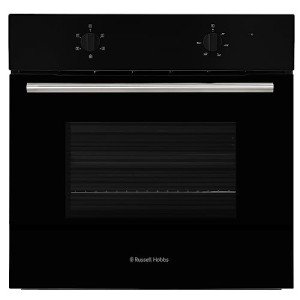The Top Reasons Why People Succeed In The Single Fan Oven Industry
페이지 정보
작성자 Tristan 댓글 0건 조회 6회 작성일 25-07-05 22:16본문

The Ultimate Guide to Single Fan Ovens
Single fan ovens, likewise called convection ovens, have actually gained appeal in contemporary cooking areas due to their capability to offer constant cooking results. Unlike standard ovens, single fan ovens flow hot air around the food, enabling even heat distribution. This post takes an in-depth take a look at the features, advantages, and factors to consider associated with single fan ovens.
What is a Single Fan Oven?
A single fan oven is designed with a fan and an exhaust system that distribute hot air evenly throughout the cooking cavity. This technology enables food to cook more uniformly and typically lowers cooking times compared to standard ovens. The fan can be discovered at the back of the oven and works in combination with the heating components, helping with efficient heat transfer.
Key Features
| Feature | Description |
|---|---|
| Even Cooking | Guarantees that food cooks evenly and lowers the risk of hot or cold areas. |
| Time Efficiency | Reduces cooking time by as much as 20-25% compared to traditional ovens. |
| Temperature level Consistency | Maintains consistent temperature, causing reliable cooking results. |
| Flexibility | Suitable for baking, roasting, and broiling throughout a variety of meals. |
| Energy Efficiency | Normally takes in less energy due to much shorter cooking times. |
Advantages of Single Fan Ovens
Uniform Cooking: The even circulation of heat guarantees that all sides of the food are prepared all at once. This helps in accomplishing aspects like browned surfaces and moist centers, especially in baked goods.
Faster Cooking Times: The hot air blood circulation enables food to cook quicker compared to standard ovens. This efficiency is particularly helpful for busy individuals or households with tight schedules.
Energy Savings: Thanks to their much faster cooking times, Single Fan Ovens (just click the next document) can often take in less energy, making them a more sustainable alternative for environmentally mindful consumers.
Multi-Shelf Cooking: Due to the even heat circulation, numerous dishes can be prepared concurrently on different racks without taste transfer.
Decreased Need for Preheating: Many dishes can be executed without preheating, hence saving additional time and energy.
Considerations When Choosing a Single Fan Oven
When choosing a single fan oven, a number of aspects should be thought about to ensure it meets your cooking needs:
Size: Choose an oven that fits easily in your kitchen space while providing adequate capacity for cooking or baking.
Features: Many single fan ovens feature additional functions such as self-cleaning alternatives, programmable settings, and numerous cooking modes (e.g., bake, roast, grill). Examine which features are important for your cooking style.
Energy Rating: Look for energy-efficient models that can assist minimize energy costs while likewise benefiting the environment.
Brand name Reputation: Research different brand names and their evaluations to make sure dependability and after-sales service.
Spending plan: Establish a spending plan that considers both the preliminary investment and long-term operating costs.
How to Use a Single Fan Oven Effectively
Utilizing a single fan oven is relatively simple. However, to maximize its benefits, some tips are important:
Adjust Temperatures: It is typically suggested to lower the dish temperature level by around 20 degrees Celsius (or 25 degrees Fahrenheit) compared to standard ovens.
Use Shallow Baking Trays: Shallow trays allow much better air flow around the food, promoting even cooking.
Avoid Overcrowding: Leave area between dishes to make sure the hot air streams freely and cooks whatever evenly.
Rotate Dishes: For even much better outcomes, consider rotating baking trays halfway through the cooking procedure, particularly with larger or dense items.
FAQs About Single Fan Ovens
1. What types of foods can I prepare in a single fan oven?
Single fan ovens are versatile and appropriate for baking, roasting meats, cooking casseroles, and even dehydrating fruits. They can handle a wide range of dishes across different foods.
2. Do I still need to preheat a single fan oven?
While many recipes can be prepared without pre-heating, some baked goods, like soufflés or specific bread recipes, may carry out best when the oven is preheated.
3. Can I bake multiple trays of cookies at as soon as in a single fan oven?
Yes, among the benefits of a single fan oven is that you can bake multiple trays at the same time without jeopardizing outcomes. Just make sure enough area for air circulation around each tray.
4. Is a single fan oven more energy-efficient than a standard oven?
Yes, single fan ovens can be more energy-efficient due to quicker cooking times, which decreases total energy consumption.
5. Are single fan ovens helpful for baking bread?
Single fan ovens are outstanding for baking bread as they provide even heat, which is crucial for achieving a good rise and crust.
In conclusion, single fan ovens provide numerous advantages in versatility, effectiveness, and cooking quality. Their capability to prepare evenly and conserve time makes them an appealing choice for home chefs. When picking a single fan oven, consider factors such as size, functions, and energy intake to find the best fit for your culinary needs. With correct usage and care, a single fan oven can end up being a vital device in any kitchen, enhancing both cooking experiences and outcomes.

댓글목록
등록된 댓글이 없습니다.

